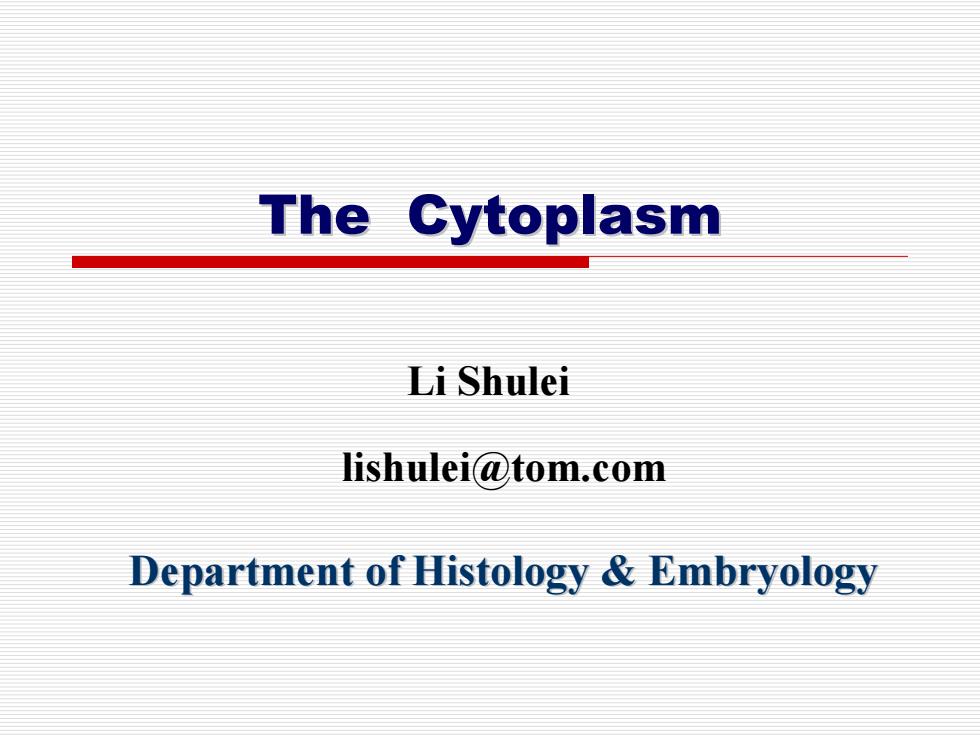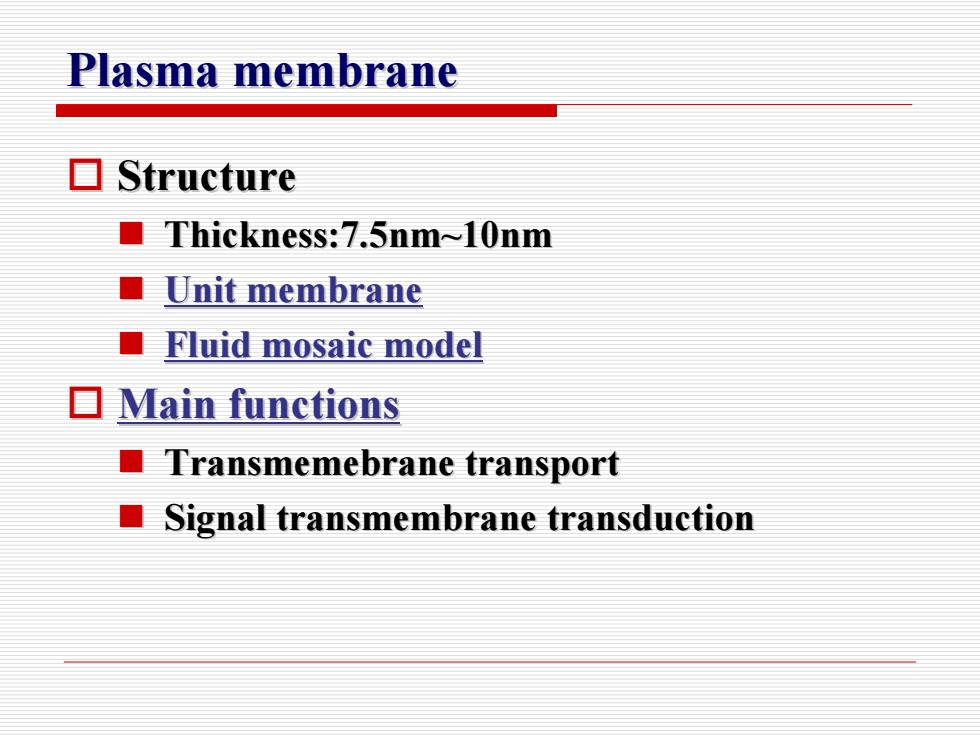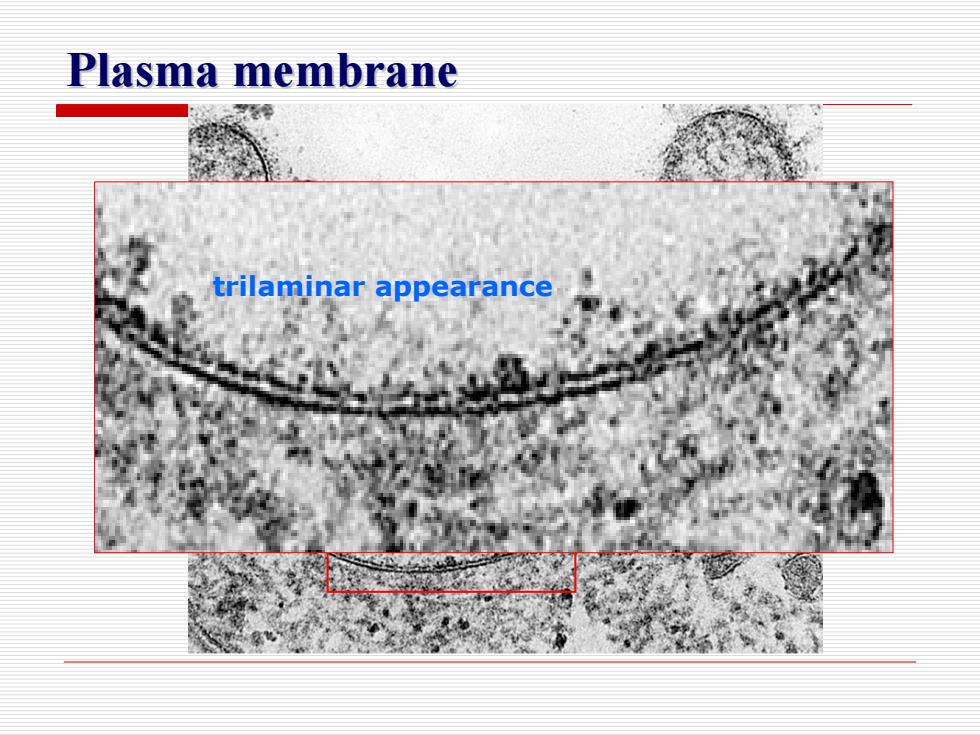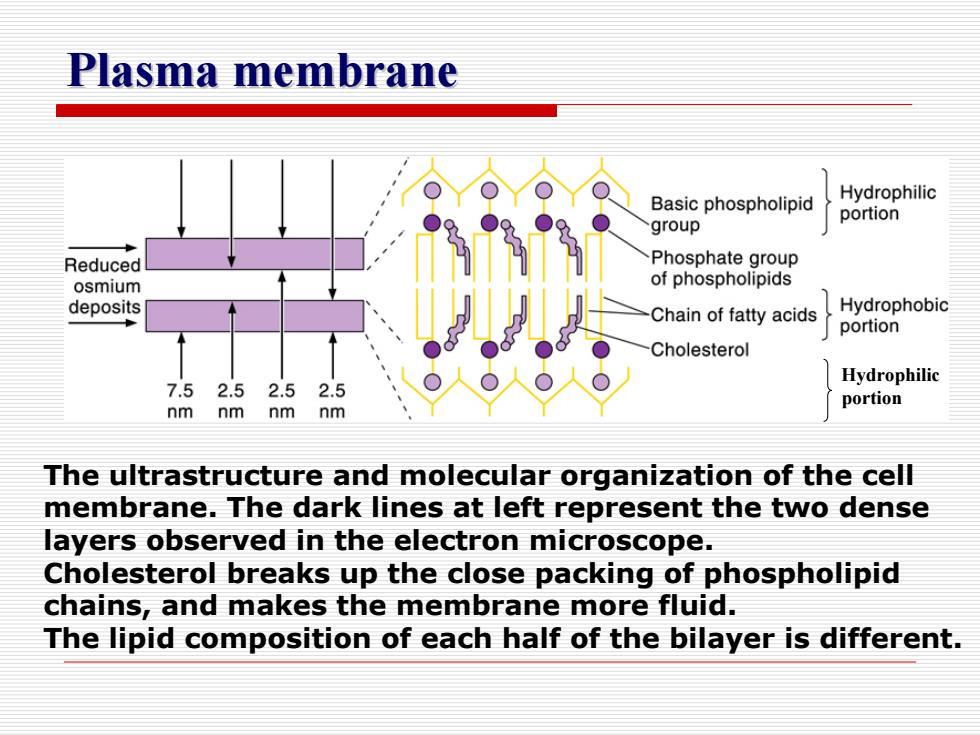
The Cytoplasm Li Shulei lishulei@tom.com Department of Histology Embryology
The Cytoplasm The Cytoplasm Department of Histology & Embryology Department of Histology & Embryology Li Shulei lishulei@tom.com

Cell components ▣Cytoplasm ■ Plasma membrane ■Organelles Cytoplasmic deposits ■Cytoskeleton ■Cytosol Matrix) ▣Nucleus
Cell components Cell components Cytoplasm Cytoplasm Plasma membrane Plasma membrane Organelles Organelles Cytoplasmic Cytoplasmic deposits deposits Cytoskeleton Cytoskeleton Cytosol Cytosol ( Matrix ) ( Matrix ) Nucleus Nucleus

Plasma membrane ▣Structure Thickness:7.5nm~10nm ■Unit membrane ■Fluid mosaic model ▣Main functions Transmemebrane transport ■ Signal transmembrane transduction
Plasma membrane Plasma membrane Structure Structure Thickness:7.5nm~10nm Thickness:7.5nm~10nm Unit membrane Unit membrane Fluid mosaic model Fluid mosaic model Main functions Main functions Transmemebrane Transmemebrane transport transport Signal transmembrane transmembrane transduction transduction

Plasma membrane trilaminar appearance
Plasma membrane Plasma membrane trilaminar appearance

Plasma membrane Basic phospholipid Hydrophilic group portion Reduced Phosphate group osmium of phospholipids deposits Chain of fatty acids Hydrophobic portion Cholesterol Hydrophilic 7.52.52.52.5 portion nm nmnmnm The ultrastructure and molecular organization of the cell membrane.The dark lines at left represent the two dense layers observed in the electron microscope. Cholesterol breaks up the close packing of phospholipid chains,and makes the membrane more fluid. The lipid composition of each half of the bilayer is different
Plasma membrane Plasma membrane Hydrophilic portion The ultrastructure and molecular organization of the cell membrane. The dark lines at left represent the two dense layers observed in the electron microscope. Cholesterol breaks up the close packing of phospholipid chains, and makes the membrane more fluid. The lipid composition of each half of the bilayer is different